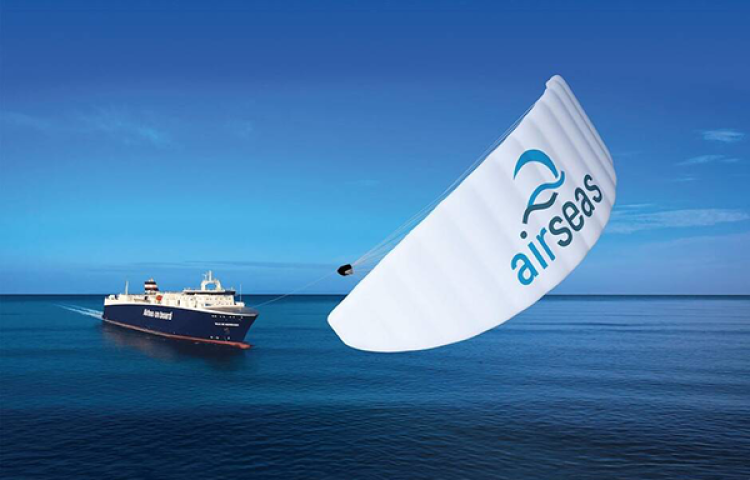An XXL sail to tow cargo ships

Among the solutions proposed in recent years for low-carbon maritime transport, wind propulsion is gaining ground: using the energy produced by the wind on a sail to propel a ship.
Founded in 2016 in Toulouse, Airseas is a spin-off of the company Airbus. It is developing giant kite wings to propel commercial ships and has used the aeronautical expertise of its founders to create Seawing, a wing-sail, which would save cargo ships 20% of fuel, and even up to 40% on certain maritime routes, as well as reduce C02 emissions.
Harnessing the power of the wind with innovative technologies
Deployed (and folded) at the front of the ship in less than 15 minutes in a fully automated manner, the Seawing makes optimal use of the power of the wind, thanks to an operational altitude of more than 150 metres, which provides it with a stable and powerful wind. It also benefits from ‘dynamic flight capabilities’ giving it a pulling power of up to 100 tonnes. Seawing will thus be able to pull ships of over 200,000 tonnes and over 300 metres in length.
Airseas has asked the company Nervures to manufacture the giant wing. A small Pyrenean company and the last French manufacturer of paragliders and other sails for aerial sports, it was given the difficult task of developing hyper-technical sails made of polyester and carbon fibre which are 20 to 40 times larger than those of the paragliders usually designed.
Equipping 15% of the world's commercial fleet by 2030
It is fair to say that the company has risen to the challenge! While Vincent Bernatets, CEO of Airseas, talks about the possibility of producing 2,000 square metre wings within two years, for the time being an intermediate size wing of 250 m² was successfully tested in Morbihan, Brittany. Experiments are now continuing in the Mediterranean and by the end of the year, an automated 500 m² kite will be deployed on the Ville de Bordeaux ro-ro ship for the transport of A320 parts between Saint-Nazaire and the USA. A simple switch should launch and reel in the kite, which will deploy and fold back down autonomously.
Two years ago, Airseas also signed a contract with Japanese shipping operator K Line - the world's fifth largest fleet - to equip 50 of its 250-300 metre merchant ships with Seawing kites for the transport of bulk goods between Australia and Japan.
The eventual commercial target is to produce 1,000 sails per year to equip 15% of the world's commercial fleet, which would equate to an annual reduction of over 40 million tonnes of CO2.
More information:
https://www.airseas.com





